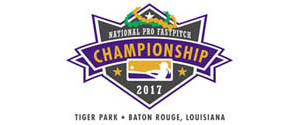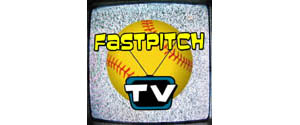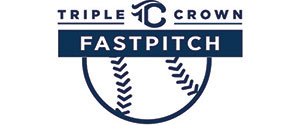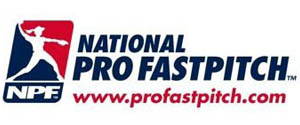I'm merely a parent so don't have a rule book. My DD explains the LBR "Once I have the ball in the circle, any runner off base has to commit one way or the other, if they just stand there they are out." I tell her "That seems too simple, there must be more to it", and she tells me "Don't worry about it, Daaad." But of course I do, feeling it's important she knows and understands all the intricacies. (which she might, for all I know.)
This came up in another thread, "when does the LBR go into effect (for other base runners) following a walk - right away, or only after the walked batter gets to first base."
This is the kind of "finer point" in the rule that I'm curious about, and I'm sure there must be others.
Any help? Thanks in advance.
Fastpitch Discussions
LBR Rule - what is it?
10 posts
• Page 1 of 1
Don't worry about tomorrow. You did that yesterday.
-

anonlooker - Posts: 3114
- Joined: Mon Dec 31, 2007 6:14 pm
If I dont put simply all the rules.. it will be corrected ad nauseum.. so I'll copy / paste ASA 8-7-T and the Rules Supplement (RS34) for you.. I'll highlight some points often missed
The Runner is OUT:
8.7.T (Fast Pitch) LOOK BACK RULE.
The “Look Back” rule shall be in effect for all runners when the ball is live,
the batter-runner has touched first base or has been declared out, and the
pitcher has possession and control of the ball within the pitcher’s circle. The
pitcher is considered to be in the pitcher’s circle when both feet are on or
within the lines.
1. When a runner is legitimately off a base after a pitch or as a result
of a batter completing a turn at bat, and while the pitcher has control
of the ball within the eight foot radius of the pitcher’s plate, the
runner may stop once, but then must immediately return to the
base or attempt to advance to the next base.
2. Once the runner stops at a base for any reason, the runner will
be declared out if leaving the base.
3. Responsibilities of the batter-runner after touching first base, and
while the pitcher has control of the ball within the eight foot radius
of the pitcher’s plate. This includes a base on balls or a dropped
third strike.
a. A batter-runner who rounds first base toward second base
may stop once, but then must immediately non-stop return to
first base or attempt to advance non-stop to second base.
b. A batter-runner who over-runs first base toward right field,
turns left and immediately stops, must then return non-stop to
first base or attempt to advance non-stop to second base.
c. A batter-runner who over-runs first base toward right field,
turns left and moves directly toward second base and stops
is committed to second base and must attempt to advance
non-stop to second base.
d. A batter-runner who over-runs first base toward right field,
turns left and moves back toward the infield in any direction
except directly toward second base is committed to first base
and must return non-stop to first base.
e. A batter-runner who over-runs first base toward right field,
and turns right, is committed to first base and must return
non-stop to first base.
EFFECT - Section 7-T (1-3): The ball is dead. “No pitch” is
declared when applicable, and the runner is out. When more
than one runner is off base, if one is called out, the ball is
dead and other runners are returned to the last base touched.
One runner only may be called out.
EXCEPTION: The runner will not be declared out if
1. A play is made on any runner. A fake throw is considered a play,
2. The pitcher no longer has possession of the ball within the eight
foot radius, or
3. The pitcher releases the ball on a pitch to the batter.
RS34
34. LOOK-BACK RULE (Fast Pitch) (Rule 8 Section 7 T).
When a runner is legitimately off base after a pitch, or as a result of a
batter completing their turn at bat, and is stationary when the pitcher has
the ball in the circle, the runner MUST immediately attempt to advance to
the next base or immediately return to the base left.
The responsibility is entirely on the runner. There is no obligation on the
pitcher to look, fake or throw.
A. The “look back” rule does not go into effect for any runner until the
batter-runner touches first base or is called out, and the pitcher has
control of the ball within the eight foot radius circle.
B. Failure to immediately proceed to the next base or return to their original
base after the pitcher has the ball within the circle results in the runner
being called out.
C. Once the runner returns or stops at any base for any reason, the runner
is out if they leave that base.
EXCEPTION B-C: A runner will not be declared out when:
1. A play is made on another runner, or
2. The pitcher leaves the circle or drops the ball, or
3. The pitcher releases the ball to the batter, or
4. The pitcher places the ball under their arm or between their legs
to free both hands to fix their uniform, hair, etc. The ball is not
controlled unless it is held in the glove or hand. Once the pitcher
controls the ball again in the glove or hand, the “Look Back” rule
is again in effect.
D. If multiple runners are off base and more than one umpire calls a runner
out, the umpires must determine which runner was called out first
and return the other runner(s) to the base they left. When a runner is
declared out in this situation, the ball is dead. It is impossible to call
two outs on the “look back” rule.
E. A pitcher fielding a ball in the circle is an infielder and runners can leave
their base. If runners leave their base, the same rule applies while the
pitcher holds the ball in the circle: once the runner stops, they must
decide which way to continue or be called out.
F. A base on balls or a dropped third strike is treated as a batted ball if
the batter-runner continues past first base without stopping or stops
only once and then immediately moves one way or the other. However,
if the runner stops at first base and then steps off the base after the
pitcher has the ball in the circle, the runner is out.
G. Batter-runners overrunning first base can not start back to the base,
and before reaching first advance to second base. If a batter-runner
commits to first base, moving toward first base, the runner must return
to that base. The batter-runner may not change their mind and advance
to second base once they have started moving directly to first
base following the overrun. If they do so, the runner is out. Umpire’s
judgment determines what is committing toward a base.
H. If a runner is moving toward a base, other than first base, when the
pitcher receives the ball in the circle, that runner may stop once then
immediately advance to the next base or return to the previous base.
A runner failing to advance to the next base or return to the previous
base should be called out. Making an attempt or fake justifies the runner
being called out. If, after the pitcher has the ball in the circle, the
runner starts back to their original base or forward to another base and
then stops or reverses direction, the runner is out unless the pitcher
makes a play on them or another runner. When a play is made on any
runner, other runners may also stop or reverse their direction.
I. A runner is out when standing off the base and they do not immediately
attempt to advance or return after the pitcher has the ball in the
circle.
J. While in the circle and in possession of the ball, any act by the pitcher
that, in the umpire’s judgment, causes the runner to react is considered
making a play.
K. The pitcher must have control of the ball while in the circle. Placing
the ball on the ground, holding the ball between their legs or under
their arm is not considered having control of the ball.
L. Being in the eight-foot circle is defined as both feet within or partially
within the lines. The pitcher is not considered in the circle if either foot
is completely outside the lines.
The Runner is OUT:
8.7.T (Fast Pitch) LOOK BACK RULE.
The “Look Back” rule shall be in effect for all runners when the ball is live,
the batter-runner has touched first base or has been declared out, and the
pitcher has possession and control of the ball within the pitcher’s circle. The
pitcher is considered to be in the pitcher’s circle when both feet are on or
within the lines.
1. When a runner is legitimately off a base after a pitch or as a result
of a batter completing a turn at bat, and while the pitcher has control
of the ball within the eight foot radius of the pitcher’s plate, the
runner may stop once, but then must immediately return to the
base or attempt to advance to the next base.
2. Once the runner stops at a base for any reason, the runner will
be declared out if leaving the base.
3. Responsibilities of the batter-runner after touching first base, and
while the pitcher has control of the ball within the eight foot radius
of the pitcher’s plate. This includes a base on balls or a dropped
third strike.
a. A batter-runner who rounds first base toward second base
may stop once, but then must immediately non-stop return to
first base or attempt to advance non-stop to second base.
b. A batter-runner who over-runs first base toward right field,
turns left and immediately stops, must then return non-stop to
first base or attempt to advance non-stop to second base.
c. A batter-runner who over-runs first base toward right field,
turns left and moves directly toward second base and stops
is committed to second base and must attempt to advance
non-stop to second base.
d. A batter-runner who over-runs first base toward right field,
turns left and moves back toward the infield in any direction
except directly toward second base is committed to first base
and must return non-stop to first base.
e. A batter-runner who over-runs first base toward right field,
and turns right, is committed to first base and must return
non-stop to first base.
EFFECT - Section 7-T (1-3): The ball is dead. “No pitch” is
declared when applicable, and the runner is out. When more
than one runner is off base, if one is called out, the ball is
dead and other runners are returned to the last base touched.
One runner only may be called out.
EXCEPTION: The runner will not be declared out if
1. A play is made on any runner. A fake throw is considered a play,
2. The pitcher no longer has possession of the ball within the eight
foot radius, or
3. The pitcher releases the ball on a pitch to the batter.
RS34
34. LOOK-BACK RULE (Fast Pitch) (Rule 8 Section 7 T).
When a runner is legitimately off base after a pitch, or as a result of a
batter completing their turn at bat, and is stationary when the pitcher has
the ball in the circle, the runner MUST immediately attempt to advance to
the next base or immediately return to the base left.
The responsibility is entirely on the runner. There is no obligation on the
pitcher to look, fake or throw.
A. The “look back” rule does not go into effect for any runner until the
batter-runner touches first base or is called out, and the pitcher has
control of the ball within the eight foot radius circle.
B. Failure to immediately proceed to the next base or return to their original
base after the pitcher has the ball within the circle results in the runner
being called out.
C. Once the runner returns or stops at any base for any reason, the runner
is out if they leave that base.
EXCEPTION B-C: A runner will not be declared out when:
1. A play is made on another runner, or
2. The pitcher leaves the circle or drops the ball, or
3. The pitcher releases the ball to the batter, or
4. The pitcher places the ball under their arm or between their legs
to free both hands to fix their uniform, hair, etc. The ball is not
controlled unless it is held in the glove or hand. Once the pitcher
controls the ball again in the glove or hand, the “Look Back” rule
is again in effect.
D. If multiple runners are off base and more than one umpire calls a runner
out, the umpires must determine which runner was called out first
and return the other runner(s) to the base they left. When a runner is
declared out in this situation, the ball is dead. It is impossible to call
two outs on the “look back” rule.
E. A pitcher fielding a ball in the circle is an infielder and runners can leave
their base. If runners leave their base, the same rule applies while the
pitcher holds the ball in the circle: once the runner stops, they must
decide which way to continue or be called out.
F. A base on balls or a dropped third strike is treated as a batted ball if
the batter-runner continues past first base without stopping or stops
only once and then immediately moves one way or the other. However,
if the runner stops at first base and then steps off the base after the
pitcher has the ball in the circle, the runner is out.
G. Batter-runners overrunning first base can not start back to the base,
and before reaching first advance to second base. If a batter-runner
commits to first base, moving toward first base, the runner must return
to that base. The batter-runner may not change their mind and advance
to second base once they have started moving directly to first
base following the overrun. If they do so, the runner is out. Umpire’s
judgment determines what is committing toward a base.
H. If a runner is moving toward a base, other than first base, when the
pitcher receives the ball in the circle, that runner may stop once then
immediately advance to the next base or return to the previous base.
A runner failing to advance to the next base or return to the previous
base should be called out. Making an attempt or fake justifies the runner
being called out. If, after the pitcher has the ball in the circle, the
runner starts back to their original base or forward to another base and
then stops or reverses direction, the runner is out unless the pitcher
makes a play on them or another runner. When a play is made on any
runner, other runners may also stop or reverse their direction.
I. A runner is out when standing off the base and they do not immediately
attempt to advance or return after the pitcher has the ball in the
circle.
J. While in the circle and in possession of the ball, any act by the pitcher
that, in the umpire’s judgment, causes the runner to react is considered
making a play.
K. The pitcher must have control of the ball while in the circle. Placing
the ball on the ground, holding the ball between their legs or under
their arm is not considered having control of the ball.
L. Being in the eight-foot circle is defined as both feet within or partially
within the lines. The pitcher is not considered in the circle if either foot
is completely outside the lines.
ASA, NCAA, NFHS
-

wadeintothem - Posts: 1726
- Joined: Wed Feb 20, 2008 8:44 pm
wadeintothem wrote:If I dont put simply all the rules.. it will be corrected ad nauseum.. so I'll copy / paste ASA 8-7-T and the Rules Supplement (RS34) for you.. I'll highlight some points often missed
I have seen some pitchers stand behind the pitcher's plate and do a short throw from their throwing hand to their glove prior to delivering a pitch. This can happen several times with some pitchers while they are collecting themselves.
Somewhere, someone told us that this action can release runners in the same fashion as beginning to make a play can do. Is there any merit to that notion?
- Bill_B
- Posts: 88
- Joined: Tue Dec 18, 2007 7:56 pm
- Location: Simi Valley, CA
Bill_B wrote:wadeintothem wrote:If I dont put simply all the rules.. it will be corrected ad nauseum.. so I'll copy / paste ASA 8-7-T and the Rules Supplement (RS34) for you.. I'll highlight some points often missed
I have seen some pitchers stand behind the pitcher's plate and do a short throw from their throwing hand to their glove prior to delivering a pitch. This can happen several times with some pitchers while they are collecting themselves.
Somewhere, someone told us that this action can release runners in the same fashion as beginning to make a play can do. Is there any merit to that notion?
I do not see how F1 short throwing from her throwing hand to her glove prior to delivering a pitch would release the runner/s from the LBR unless F1 was facing the runner/s. F1 doing this action while facing the runner/s could be interpreted as a play on them.
- umpinva
- Posts: 360
- Joined: Sun Dec 30, 2007 6:47 pm
I agree with umpinva...
no way...
But if the pitcher was trying to get a reaction out of the runners by feigning something.. it could.. not that the runners would commit suicide and go anywhere.
The intent of LBR is to keep the game moving by preventing/making unnecessary these cat and mouse games.
no way...
But if the pitcher was trying to get a reaction out of the runners by feigning something.. it could.. not that the runners would commit suicide and go anywhere.
The intent of LBR is to keep the game moving by preventing/making unnecessary these cat and mouse games.
ASA, NCAA, NFHS
-

wadeintothem - Posts: 1726
- Joined: Wed Feb 20, 2008 8:44 pm
Spazsdad wrote:Do you consider the pitcher throwing the ball into her glove having possession and control of the ball in the circle? What about the pitcher putting her glove between her legs to fix her hair.I have seen one of these "pitches" get away from a pitcher and roll across the infield.
Fixing her hair with the ball in other than her hand or glove ON HER HAND.. LBR is off .
THe pitcher doing her "practice pitch deal" into her glove when she gets the ball.. LBR is on. It is in control and in possession.
The ball getting away from her while she is goofing around.. LBR is off.
ASA, NCAA, NFHS
-

wadeintothem - Posts: 1726
- Joined: Wed Feb 20, 2008 8:44 pm
Bill_B wrote:
I have seen some pitchers stand behind the pitcher's plate and do a short throw from their throwing hand to their glove prior to delivering a pitch. This can happen several times with some pitchers while they are collecting themselves.
Somewhere, someone told us that this action can release runners in the same fashion as beginning to make a play can do. Is there any merit to that notion?
TECHNICALLY, this is correct as a ball in flight cannot be a ball in possession. However, for the short split-second between hand and glove, I don't believe any player or umpire has that good a timing to make such an allowance.
And any coach/player willing to take the chance of losing a runner based on their belief of what someone else's judgment should be, are not very good at their job.
I would never expect an umpire to make such an allowance for a sharp toss into the glove.
- MTR
- Posts: 2317
- Joined: Thu Jan 03, 2008 5:21 am
great topic. What constitutes a "play" We had a sitution this weekend where the runner came off the bag but supposedly the pitcher made a motion. I believe it was lifting her leg and the ump called the LBR off and runner was safe. Coach argues the pitcher had just caught the ball below her waist and she was just positioning herself. I really didnt see the motion, I know she sure didnt pump her arm or anything.
- Judd
- Posts: 302
- Joined: Sun Jan 27, 2008 4:48 pm
- Location: Dallas, GA
Judd wrote:great topic. What constitutes a "play" We had a sitution this weekend where the runner came off the bag but supposedly the pitcher made a motion. I believe it was lifting her leg and the ump called the LBR off and runner was safe. Coach argues the pitcher had just caught the ball below her waist and she was just positioning herself. I really didnt see the motion, I know she sure didnt pump her arm or anything.
It is a judgment call based on whether the pitcher causes the runner to react by her action. Faking a throw to the base is a good example. Generally lifting a leg just to position herself.. no.. but stepping towards the runner as if to throw it definitely could be.
ASA, NCAA, NFHS
-

wadeintothem - Posts: 1726
- Joined: Wed Feb 20, 2008 8:44 pm
Just so we don't accidentally give somebody a bad interpretation...
With regards to the Look Back Rule, just exactly what the pitcher is doing with the ball while in the circle can have a different meaning depending on which rule set you're playing under.
For example:
With runners on base, the pitcher places the ball in her glove, then places the glove between her knees to adjust her hair.
In high school ball (NFHS), the rule requires only possession of the ball by the pitcher. This "between the knees" action is considered as possession of the ball and the Look Back Rule would remain in effect.
In ASA ball, the rule requires that the pitcher have both possession AND control of the ball to keep the Look Back on. In ASA, control means the ball is securely held in either the hand or the glove while the glove is on the hand. If a pitcher does the "between the knees" thing in ASA, that is NOT considered as control and the Look Back Rule would be suspended.
Just another one of those hundred different nagging little things that you have to keep in mind when going from rule set to rule set.
With regards to the Look Back Rule, just exactly what the pitcher is doing with the ball while in the circle can have a different meaning depending on which rule set you're playing under.
For example:
With runners on base, the pitcher places the ball in her glove, then places the glove between her knees to adjust her hair.
In high school ball (NFHS), the rule requires only possession of the ball by the pitcher. This "between the knees" action is considered as possession of the ball and the Look Back Rule would remain in effect.
In ASA ball, the rule requires that the pitcher have both possession AND control of the ball to keep the Look Back on. In ASA, control means the ball is securely held in either the hand or the glove while the glove is on the hand. If a pitcher does the "between the knees" thing in ASA, that is NOT considered as control and the Look Back Rule would be suspended.
Just another one of those hundred different nagging little things that you have to keep in mind when going from rule set to rule set.
Click Here >>> To Visit The Glove Shop On-Line
-

Bretman - Posts: 316
- Joined: Mon Mar 24, 2008 10:50 pm
10 posts
• Page 1 of 1




























